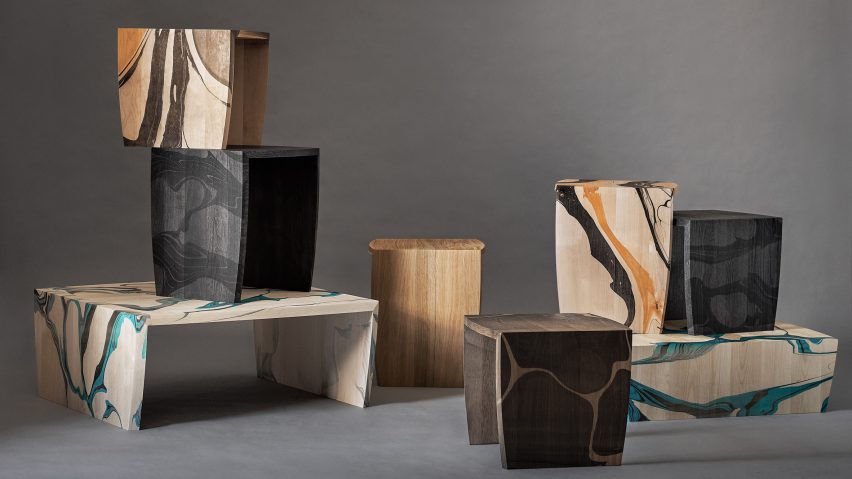
Ringvide adapts paper-colouring technique to create marbled-wood furniture
Swedish furniture producer Ringvide has designed a collection of wood furniture that is patterned with a marbling colour technique normally used on paper.
Visby-based Ringvide used the suminagashi marbling technique to create swirling patterns on its wooden tables. The Japanese technique is normally used on paper, but Ringvide has developed a way to instead imprint the colour on wood.
"Stumbling across a book about paper marbling, the idea of making it on wood furniture soon started to grow," Ringvide co-founder Lukas Dahlén told Dezeen.
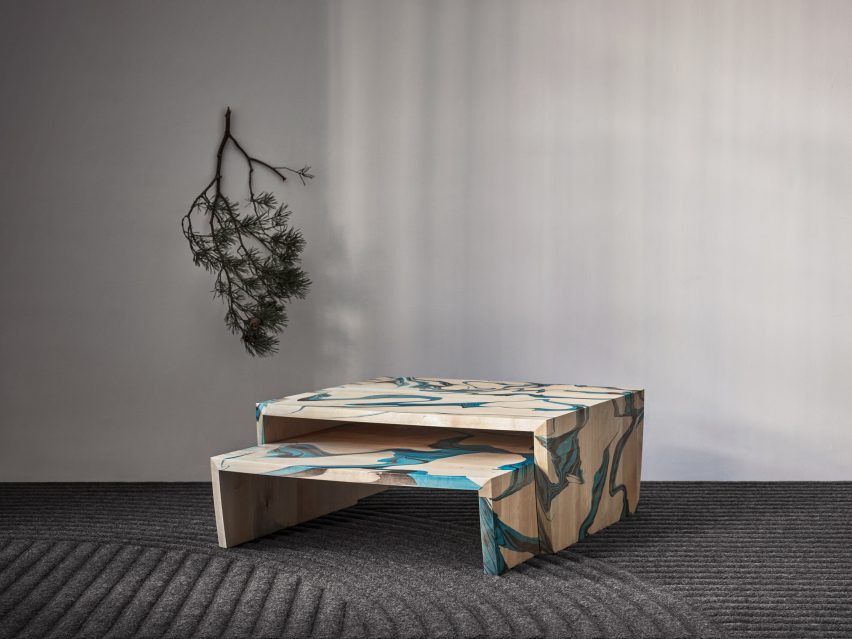
The studio used water-based ink as well as raw colour pigments, which were mixed with water to create the designs.
"When a drop of ink is gently put onto a water surface the difference in surface tension will spread the ink over the surface," Dahlén said. "When this is done repeatedly, the colour will eventually cover the whole surface."
"Varying the way the colour is applied to the surface together with different means of disrupting the surface will create different patterns, some more easily controlled than others," he added.
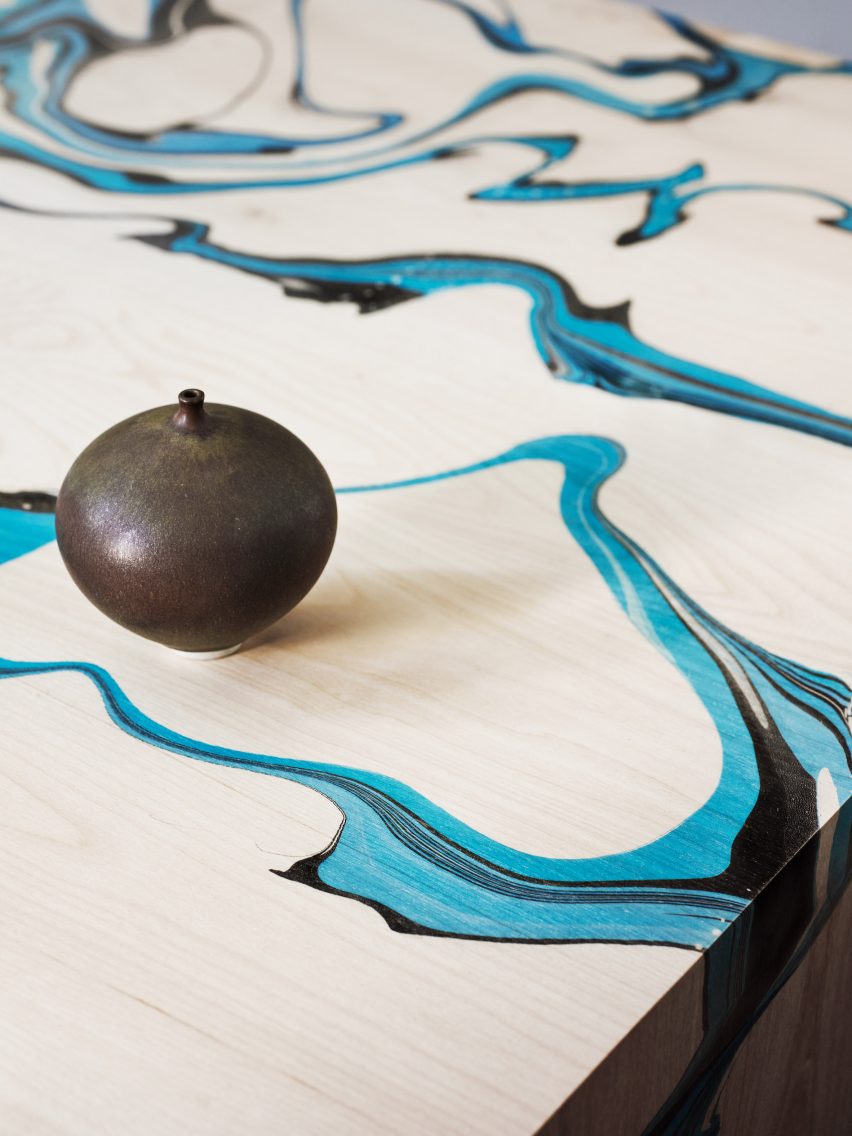
Once the colour, which is cobalt and cadmium-free, has been added to the water, the studio dipped the fully-assembled furniture into the water to ensure that the pattern wrapped around its corners and sides.
Carrageena, a biopolymer extracted from algae, was added to the water to make it thicker and easier to create shapes.
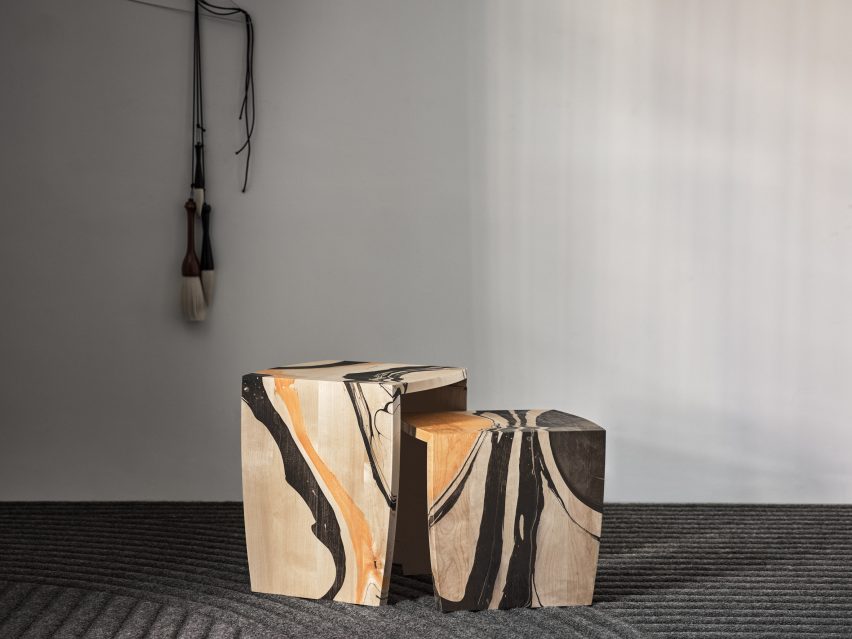
The water-based ink has an acrylic binding that makes it stick to the surface of the birch tables, creating patterns that vary from piece to piece.
"The ink is absorbed into the dry wood, working like a stain, colouring the wood on the depth," Dahlén said. "The wood is finished with oil and wax to encapsulate and protect the colour."
The studio has experimented with different colours and says pretty much any colour can be used.
"Most of the marble designs we have made so far strive to keep a lot of the wood to gently add something to it," Dahlén said. "But we are working on more bold designs."
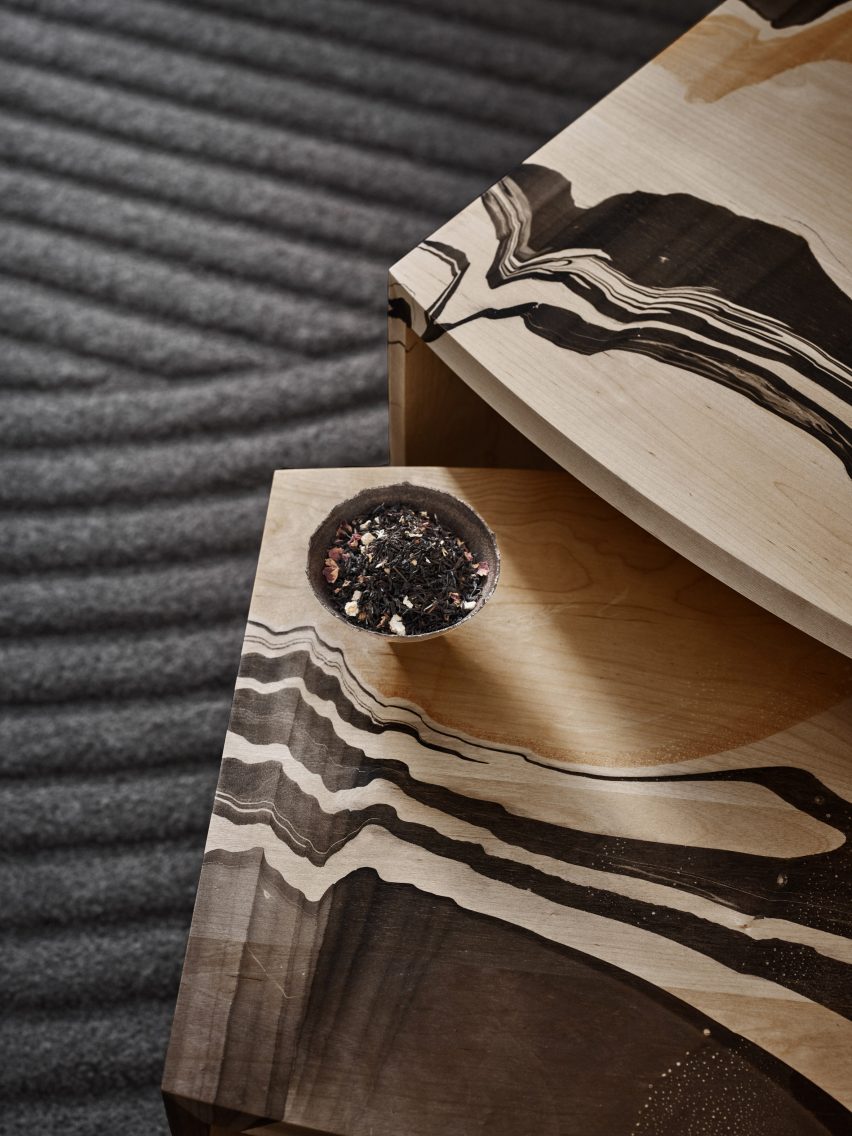
The idea behind the design came from Dahlén's interest in different types of marbling.
"I have been interested in marbling techniques in oil tempera," he said.
"Traditionally these techniques have been used to imitate a more expensive type of wood or different types of stone that have been out of reach physically or economically."
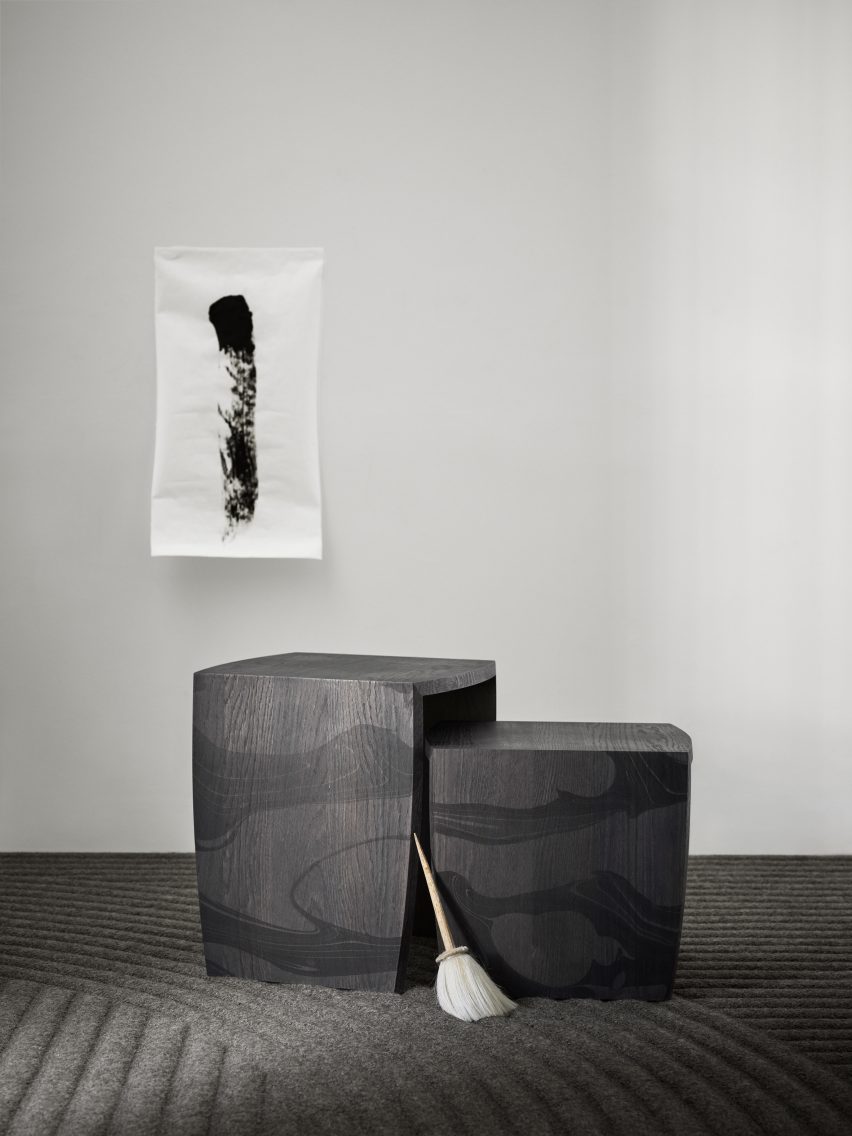
"In Stockholm, you can often be amazed by ornamented fake stone walls in staircases for example," he added.
"But it can also be found on furniture, most typically in churches. The tension between fake and real fascinates me."
Marbling effects are often used to create eye-catching designs. Previous designers to draw on the technique include British designer Tom Dixon, who created his colourful Swirl collection from a "mysterious" material and fashion brand Forte Forte, which clad one of its stores in marbled onyx.
The photography is by Fredrik Sweger.